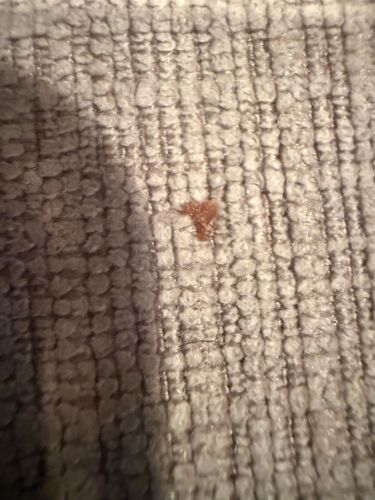Carpet Beetle larvae
Scientific Name: Anthrenus (various species), Attagenus (various species)
Order & Family: Coleoptera, Dermestidae
Size: 2-5 mm in length

Natural Habitat
Indoors, especially in undisturbed areas with natural fibers like carpets, rugs, woolens, furs, taxidermy, stored foods, and sometimes museum specimens. Outdoors, they can be found in bird nests, animal carcasses, and spider webs.
Diet & Feeding
Keratin-containing materials (like hair, wool, silk, feathers), dried animal products, stored dry foods (cereals, pasta), and occasionally synthetic fibers that are soiled.
Behavior Patterns
The larvae are usually slow-moving and prefer dark, undisturbed areas. They molt several times as they grow, leaving behind shed skins. Adult carpet beetles are typically attracted to light and feed on pollen and nectar outdoors, then lay eggs indoors on suitable food sources.
Risks & Benefits
Potential risks include damage to personal property (clothing, furniture, carpets), museum artifacts, and stored food. They are not known to bite humans or transmit diseases. No significant benefits are associated with their indoor presence, though outdoors, they play a minor role in decomposition.
Identified on: 11/20/2025